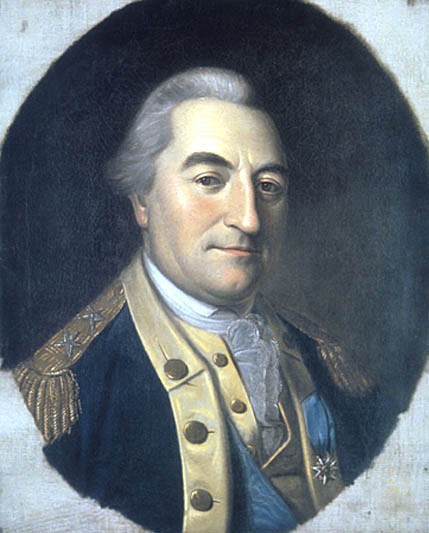
 |
||||||||||
BARON JOHANN, DE KALB 1721-1780 Charles Willson Peale, replica of original, 1781-1782 Oil on canvas. H 22 3/8, W 18 1/4 in (H 56.8, W 46.4 cm) Independence NHP INDE 14084
|
||||||||||
| About this Portrait: In 1780, before De Kalb left for South Carolina, he commissioned Charles Willson Peale for two half-length portraits. Peale completed the works and shipped them to the sitter's family in Europe. One is now privately owned, the other unlocated. A modern half-length copy is at Versailles. Within a year following De Kalb's death, Peale had painted another portrait of him for the Philadelphia Museum. The museum portrait may represent Peale's response to De Kalb's posthumous congressional honor, a monument in Annapolis, with the idea to start a portrait gallery to commemorate Revolutionary heroes. De Kalb wears a light blue sash with gold medal, the Knight's Cross, third class, of the Order of Military Merit that was created in 1759 for Swiss and German Protestant officers in the French service. The portrait is listed in Peale's October 13, 1784 advertisement for the museum in the Freeman's Journal and Philadelphia Advertiser. Ownership History: Listed in the 1795 Peale Museum catalog. Purchased by the City of Philadelphia at the 1854 Peale Museum sale. |
||||||||||
|
||||||||||
|
|
||
|
Note: Prev/next are in alphabetic order within their respective theaters. |
||
Last Modified: